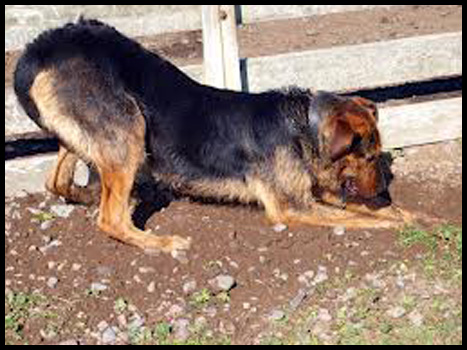Fixed Action Patterns, or FAPs, are hardwired into our dogs’ genetic make-up. They are stereotypical behaviors to a certain group: everyone has them, or each sex has them, or everyone of a certain age has them. FAPs do not have to be learned.
 FAPs aren’t learned, and they don’t happen by chance. There is usually a specific something that triggers them. For example, when a dog sees a quick moving object, his prey drive may be activated. A pup’s nursing FAP is activated when first hungry; he knows how to suck. If a puppy didn’t have a sucking reflex installed, he wouldn’t get nourishment, and without nourishment, the puppy wouldn’t survive. FAP’s are also the reason dogs will shred toys, dig holes, bury bones, and do a host of other behaviors. Doesn’t that all sound stereotypical of dogs? FAPs can get better with practice, but are also somewhat malleable to training and management if we want to lessen their intensities.
FAPs aren’t learned, and they don’t happen by chance. There is usually a specific something that triggers them. For example, when a dog sees a quick moving object, his prey drive may be activated. A pup’s nursing FAP is activated when first hungry; he knows how to suck. If a puppy didn’t have a sucking reflex installed, he wouldn’t get nourishment, and without nourishment, the puppy wouldn’t survive. FAP’s are also the reason dogs will shred toys, dig holes, bury bones, and do a host of other behaviors. Doesn’t that all sound stereotypical of dogs? FAPs can get better with practice, but are also somewhat malleable to training and management if we want to lessen their intensities.
That malleability is the other kind of genetic software a dog, or any animal, has installed. This is the learning software which equips a dog to change behaviors to best suit his environment and him. We use this flexibility when training such behaviors as sit, down, stand, and stay. Learning flexibility is a wonderful thing, though it can take many repetitions for a behavior to install properly, it can and does happen.
To understand both types of “software” in action, let’s look at housetraining. We have both software working. Dogs know urination and defecation postures from their FAP software. But their learning software is what trainers use to teach them where to eliminate. The process between the two internal states is quite remarkable.
By Helen Verte
Certified Pet Dog Trainer-Knowledge Assessed, Certified Trick Dog Instructor
Fort Lauderdale Dog Trainer
